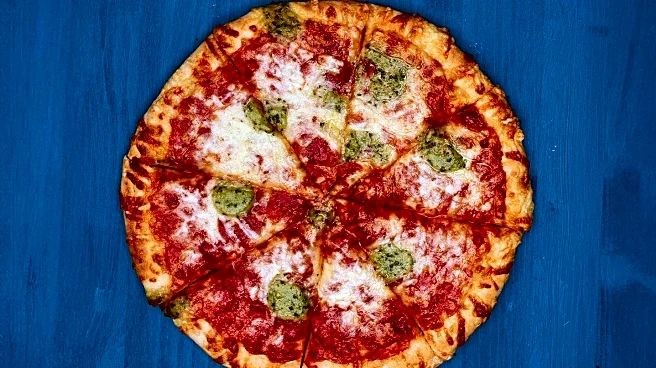What's Happening?
A recent taste test conducted by the Washington Post has revealed a new favorite frozen pizza among readers, dethroning the previous winner, DiGiorno's Classic Crust. The test involved sampling top-selling
frozen pizza brands based on market research, followed by a second test influenced by reader recommendations. The new champion, Home Run Inn Cheese Classic Pizza, received high praise for its cheese coverage and thin crust, surpassing DiGiorno's in the rankings. The test was conducted blind, with eight colleagues scoring the pizzas based on appearance, flavor, and texture.
Why It's Important?
The results of this taste test highlight the influence of consumer preferences and feedback in shaping product popularity. As frozen pizza remains a staple in American households, identifying consumer favorites can impact sales and marketing strategies for pizza brands. The shift in preference from DiGiorno's to Home Run Inn may lead to increased demand and visibility for the latter, potentially affecting its market share. This development underscores the importance of engaging with consumers and considering their input in product evaluations.
What's Next?
Following the taste test results, pizza brands may consider revisiting their recipes or marketing strategies to align with consumer preferences. Home Run Inn may experience a surge in sales and brand recognition, prompting potential expansions or promotional efforts. Other brands may analyze the feedback to improve their offerings and compete more effectively in the frozen pizza market. The Washington Post's engagement with readers through taste tests could inspire similar initiatives in other food categories.
Beyond the Headlines
The taste test reflects broader trends in consumer engagement and the power of social media and online platforms in shaping product perceptions. As consumers increasingly share their opinions and experiences online, companies may leverage this feedback to enhance product development and customer satisfaction. The test also highlights the evolving landscape of food journalism, where interactive and participatory content can drive reader interest and influence consumer behavior.











